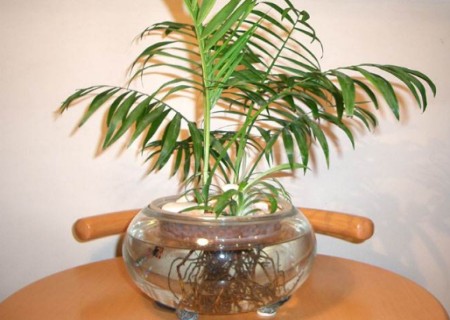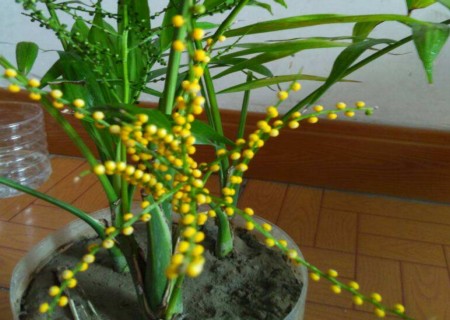Detailed illustration of the cutting process of Chinese rose
Rose can be cut all the year round, softwood cuttings can be used to propagate in spring and summer, and hardwood cuttings are mainly used in autumn and winter. The following is the detailed diagram of the cutting process to let the rose take root quickly, which is shared by the editor. I hope it will be of all help to the cutting of rose.
1. Prepare materials

Prepare an empty plastic bottle with a capacity of 2 liters, use scissors from the bottom after removing the label, prepare a large flowerpot with a medium-sized drain at the bottom, and prepare some perlite as a culture medium and soak it until it expands and keep it moist.
2. Prepare for cuttings
In order to improve the success rate of cutting, more annual branches are selected as cuttings and pruned close to the bifurcations, because the branches cut from this place are easier to germinate roots than those from other places, where there are growth nodes.
3. Branch treatment
Cut a cut about 2-3 cm in length along the cut of the cut branch, which can increase the rooting area, promote the young plants to take root higher, and the recovery time will be greatly shortened.
4. Prepare rooting powder
Prepare some rooting powder, then mix it with water according to the proportion on the operating instructions, of course, you can also directly use the rooting agent, and then soak the branches in the rooting solution for about 10-15 minutes.
5. Cuttings
The cuttings soaked in rooting solution are inserted into the perlite matrix swollen with water. Due to the need to consider the failure of some cuttings, it is recommended to insert 10 cuttings in a container, which can increase the chance of rooting and survival.
6. Heat preservation and moisturizing
After the cuttings are completed, cover the prepared empty plastic bottle on the flowerpot, cover all the cuttings in the bottle, remove the bottle cap at the same time, and then prevent maintenance and management in a place where astigmatism can be received, avoiding direct sunlight, which can not only keep warm, but also achieve moisturizing effect, which is more conducive to cuttings rooting.
7. Wound healing
After the rose cuttings are finished and maintained for several weeks, we can see that the wound at the base of the cuttings is covered with healing tissue, that is, the base of the cuttings has been scarred, and roots will sprout soon after.
8. Rooting treatment
After the cuttings take root, we can transplant them to other small flowerpots. As the plant has just taken root, it can not be transplanted in a large flowerpot, otherwise it will easily lead to decay, which is very important. It is recommended to choose a small basin of about 5-8 cm, with an appropriate amount of perlite or humus soil.
9. Transplant into the pot
After the root system is basically good and the branches become relatively strong, the young plants can be planted in larger flowerpots with soil. The previous small pot culture is a transition, which is a safe way to avoid transplanting failure and improve the success rate of cutting.
10. Move the basin again
In order to adapt to the plant growth and provide a better growth environment for the plant, we need to move the pot again, this time transplanting the young plant into a real flowerpot as a pot. Transplanting at this time, as the young plants grow more robust, the success rate of transplanting will be greatly increased.
Through the above operation methods, we can find that we have moved the pot twice from cuttings to potted plants, which may be troublesome to everyone. In fact, this is a very effective conservative method to improve the success rate of plants, which is very suitable for novice potted friends.
Time: 2019-06-08 Click:
- Prev

Hydroponic Culture method of Pocket Coconut
Pocket coconut is often regarded as one of the preferred green plants for indoor small and medium-sized foliage potted plants because of its beautiful plant shape and convenient management. Pocket coconut also has the effect of purifying harmful substances in the air, such as benzene, trichloroethylene, formaldehyde and so on. It is a high-efficiency air purifier in the plant world and is very suitable for keeping indoors.
- Next

How to plant pocket coconut seeds
Pocket coconut not only has high ornamental value, but also can purify harmful substances in the air. Because its plant shape loves school, exquisite and chic, it is named pocket coconut, which can be sown and propagated by seeds. So, how to grow pocket coconut seeds? Today, the editor will talk about it for you.
Related
- Fuxing push coffee new agricultural production and marketing class: lack of small-scale processing plants
- Jujube rice field leisure farm deep ploughing Yilan for five years to create a space for organic food and play
- Nongyu Farm-A trial of organic papaya for brave women with advanced technology
- Four points for attention in the prevention and control of diseases and insect pests of edible fungi
- How to add nutrient solution to Edible Fungi
- Is there any good way to control edible fungus mites?
- Open Inoculation Technology of Edible Fungi
- Is there any clever way to use fertilizer for edible fungus in winter?
- What agents are used to kill the pathogens of edible fungi in the mushroom shed?
- Rapid drying of Edible Fungi

